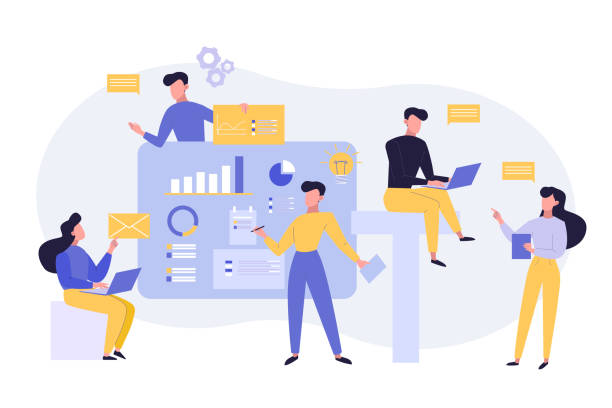Introduction to #On-Page_SEO and Its Importance for Website Success
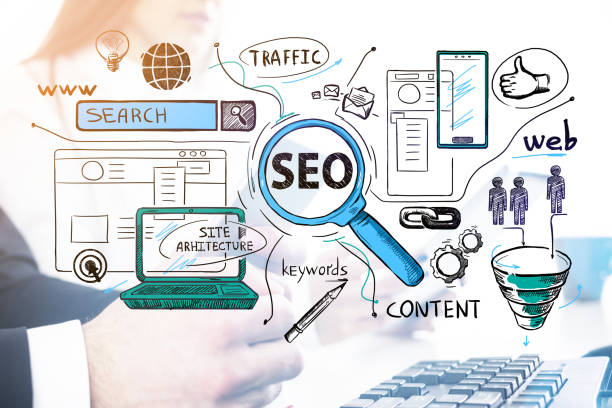
In today’s competitive web world, #prominent_presence in search engine results is a necessity, and #On-Page_SEO is considered the cornerstone to achieving this goal.
On-page SEO refers to a set of actions performed #within_the_site and on its visible and editable elements to optimize web pages for search engines and users.
This includes #content_optimization, #HTML_tags, #URL_structure, and many other items.
The importance of this part of SEO is that you have complete control over it and can directly influence it.
Unlike off-page SEO, which relies on inbound links from other sites, on-page SEO (or on-page optimization) allows you to better convey the subject and quality of your content to search engines.
This helps search engines understand the relevance of your content to user queries, thereby assigning you higher rankings.
In fact, strong #on-page_SEO not only helps improve rankings but also significantly enhances user experience, as it makes content more readable, relevant, and accessible.
This explanatory and educational approach, in the first step, makes understanding the principles of on-page SEO vital for any webmaster or business owner looking to be seen in the online space.
Falling behind against large online stores in the competition?
RasabWeb offers professional e-commerce website design, taking your business online and increasing your market share!
✅ Increase brand credibility and customer trust
✅ Easy shopping experience leading to more sales
⚡ Act now for a free website design consultation!
Keyword Research for Successful and Targeted #On-Page_SEO
![]()
One of the main foundations of effective #On-Page_SEO is comprehensive and precise #keyword_research.
This specialized stage not only helps you understand exactly what your users are looking for, but also allows you to shape your content around the real needs of your audience.
Beyond finding high-volume keywords, the goal of keyword research is to understand #User_Intent behind each search.
Is the user looking for information (informational keywords), intending to buy (commercial keywords), or searching for a specific website (navigational keywords)? Choosing the right keywords is the starting point for your #content_strategy and ultimately optimizing your pages for on-page SEO.
Using tools like Google Keyword Planner, Ahrefs, or SEMrush can help you identify primary keywords as well as long-tail keywords (Long-Tail Keywords) which are less competitive and much more targeted.
Long-tail keywords typically consist of three or more words and more precisely indicate user intent, therefore having a higher conversion rate.
For example, instead of “SEO,” use “complete on-page SEO tutorial for beginners.”
This guidance-oriented approach ensures that every piece of content on your website directly answers searchers’ needs, ultimately leading to improved rankings and increased relevant traffic.
Content and Meta Tag Optimization for Enhancing #On-Page_SEO
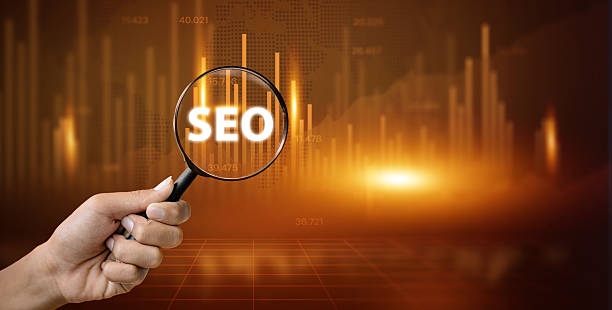
Content and meta tag optimization are among the most crucial aspects of #On-Page_SEO.
Your content should not only be appealing to search engines but also provide high value and utility to the reader.
Strategic use of #keywords in the text, without overdoing it and Keyword Stuffing, helps search engines understand the main topic of your page.
Meta tags, including #Title_Tag and #Meta_Description, play a significant role in attracting users’ attention in search results.
The Title Tag is the title displayed at the top of the browser and in search results, and it should include the main keyword and be engaging.
The Meta Description is a short summary of the page’s content that encourages users to click and should be consistent with your content.
Also, using Heading tags (H1 to H6) for organizing content and improving readability is very important; H1 should be the main title of the page and used only once, while H2 to H6 are used for subheadings.
Quality, in-depth, and user-friendly content, along with proper structuring, is the foundation of any successful on-page SEO strategy.
This explanatory and analytical section elaborates on strategies to improve these key elements.
| Meta/Title Element | Description and Importance | Best On-Page SEO Performance |
|---|---|---|
| Title Tag | The main title of the page displayed in the browser tab and search results. The first thing a user sees. |
Include the main keyword at the beginning. Max 60 characters. Engaging and encouraging clicks. |
| Meta Description Tag | A short summary of the page content that appears below the title in search results. | Include relevant keywords. Max 160 characters. Descriptive and includes a Call to Action. |
| H1 Tag (Main Heading) | The most important heading within the content that shows the main structure of the page. | Only one H1 per page. Includes the main keyword. Clear and relevant to the page title. |
| H2-H6 Tags (Subheadings) | For dividing content into smaller sections and improving readability. | Logical and hierarchical use. Includes secondary keywords (LSI Keywords) and related keywords. |
Technical Aspects of #On-Page_SEO: Speed, Mobile, and Structured Data
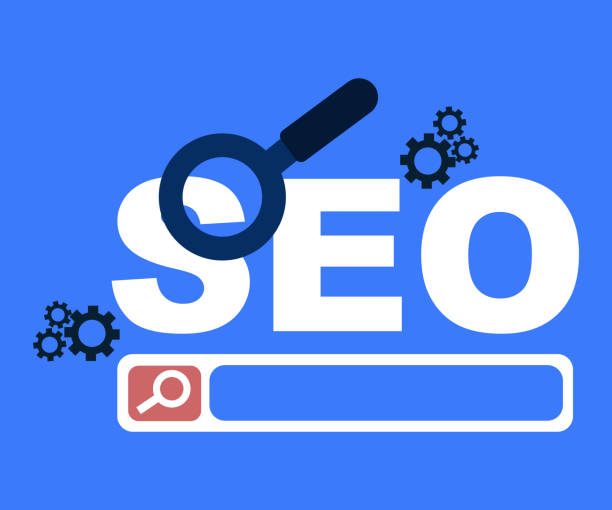
Beyond content, the technical aspects of #On-Page_SEO also play a vital role in your website’s ranking.
#Page_Speed is one of the most important ranking factors, as users and search engines prefer fast websites.
A slow-loading website creates a poor user experience and can lead to a high Bounce Rate.
You can improve your site speed by optimizing images, compressing codes (CSS, JavaScript, HTML), and using Content Delivery Networks (CDNs).
Also, given the increasing use of mobile phones, #Mobile-Friendliness or #Responsive_Design of a website is an absolute requirement for #on-page_optimization.
Google primarily indexes pages based on their mobile version (Mobile-First Indexing).
Ensure your website displays well on all devices and has easy navigation.
Finally, implementing #Structured_Data or #Schema_Markup helps search engines better understand your content and display it in more attractive forms, such as Rich Snippets, in search results.
This specialized guidance emphasizes the importance of these invisible yet vital aspects of on-page SEO.
Are you dissatisfied with the low conversion rate of visitors to customers on your e-commerce site?
Solve this problem forever with professional e-commerce website design by RasabWeb!
✅ Significant increase in visitor-to-customer conversion rate
✅ Create an excellent user experience and build customer trust
⚡ Get a free consultation
The Role of Content Quality in Increasing #On-Page_SEO Ranking and User Trust

In today’s #On-Page_SEO world, simply stuffing text with keywords is no longer enough.
#Content_Quality has become the backbone of any successful SEO strategy.
Search engines, especially Google, have developed their algorithms to understand the depth, relevance, and usefulness of content.
Quality content not only answers user questions but also provides comprehensive, accurate, and reliable information that goes beyond initial expectations.
This includes #analytical, #educational, or even #entertaining content that encourages users to read more and reduces the bounce rate.
The E.A.T concept (Expertise, Authoritativeness, Trustworthiness), which has now evolved to E.E.A.T (Experience, Expertise, Authoritativeness, Trustworthiness), emphasizes the importance of experience, expertise, authority, and trustworthiness in content creation.
The more specialized and authoritative your content, the more likely it is to be identified as a valuable resource by search engines and achieve a higher ranking.
Good content naturally attracts more links and users spend more time on your page, all of which are positive signals for search engines and significantly help improve your #On-Page_SEO.
Producing valuable, long, and in-depth content not only increases your ranking but also builds audience trust and positions you as an authority in your field.
Effective Internal Linking Strategy for Improved Site Navigation
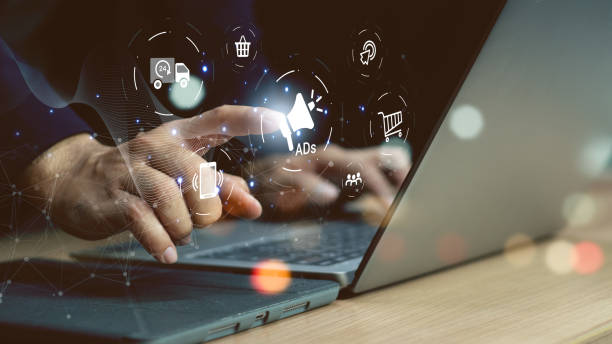
Internal Linking is one of the most important yet often overlooked aspects of #On-Page_SEO.
Internal links are links that connect different pages of your website to each other.
This strategy not only helps search engines better understand your website’s structure and crawl (Crawl) and index (Index) your pages more efficiently, but also distributes SEO power and authority (Link Equity) among the pages of your website.
When a high-authority page (e.g., the homepage) links to another page, a portion of that authority is passed to the destination page.
Additionally, proper internal linking improves #user_experience by creating an easy and logical navigation path for visitors, encouraging them to spend more time on your site and view more pages.
Choosing appropriate #Anchor_Text that includes relevant keywords is crucial, but it should be natural and avoid overly optimized (Exact Match Anchor Text) anchor texts.
The hierarchical structure of the website and clear, logical navigation complement this strategy and generally contribute significantly to #On-Page_SEO.
This instructional and guiding section highlights the importance of organizing and connecting pages to each other to maximize on-page SEO potential.
User Experience (UX) and #On-Page_SEO: An Indissoluble Relationship
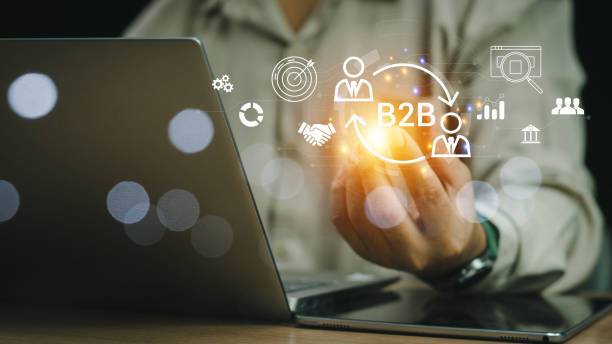
At first glance, #User_Experience (UX) and #On-Page_SEO might seem like separate concepts, but in reality, they have an indissoluble and synergistic relationship.
Search engines are increasingly relying on user experience signals to determine how useful and valuable a website is to its visitors.
A website with excellent UX not only keeps users satisfied but also indirectly helps improve SEO rankings.
Factors such as #Low_Bounce_Rate, #High_Dwell_Time, and #High_Click-Through_Rate (High CTR) are all positive signals that tell search engines your content is valuable and relevant.
Websites that have easy navigation, a pleasant visual design, load quickly, and have easily consumable content encourage users to stay longer and interact more.
These positive interactions convince search engines that your website provides an excellent answer to user needs, thereby improving your ranking.
In other words, investing in UX improvement is an investment in #On-Page_SEO.
This analytical and engaging perspective demonstrates the importance of a holistic view of website optimization, beyond just keywords, to achieve sustainable success in search results.
| User Experience (UX) Metric | Description | Impact on On-Page SEO |
|---|---|---|
| Bounce Rate | The percentage of users who leave the site after viewing only one page. | High bounce rate is a negative signal, indicating poor content or UX. Low rate means user satisfaction and content relevance. |
| Dwell Time | The amount of time a user spends on a page of the site before returning to search results. | High dwell time indicates engaging and useful content that helps improve rankings. |
| Click-Through Rate (CTR) | The percentage of users who click on your website after seeing it in search results. | High CTR indicates that your title and meta descriptions are engaging and relevant to the user’s search. |
| Conversion Rate | The percentage of visitors who perform a desired action (purchase, registration, download). | Although not a direct ranking factor, a website optimized for UX and on-page SEO leads to higher conversion rates, which is the ultimate business goal. |
Measuring and Analyzing #On-Page_SEO Performance for Continuous Optimization
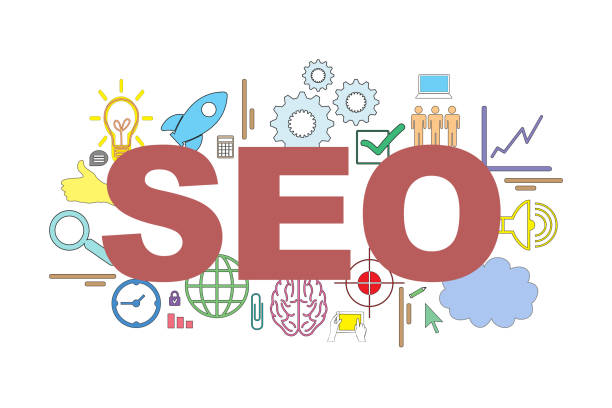
After implementing #On-Page_SEO strategies, the next crucial step is to measure and analyze their performance.
Without data, you cannot know what works and what needs improvement.
Tools like #Google_Analytics (Google Analytics) and #Google_Search_Console (Google Search Console) provide valuable data on traffic, keywords, rankings, crawl errors, and user experience.
Google Analytics allows you to understand user behavior patterns on your site, such as most visited pages, time spent on page, bounce rate, and navigation paths.
On the other hand, Google Search Console provides a direct view of how Google interacts with your site, including keywords you rank for, indexing errors, Core Web Vitals issues, and mobile-friendliness status.
Analyzing this data helps you identify the strengths and weaknesses of your #On-Page_SEO optimization.
For example, if a page has a high bounce rate, it might indicate a need to improve content quality or readability.
This analytical and guiding approach is the basis of continuous optimization, which is essential for maintaining and improving rankings in the long run and allows you to make data-driven decisions and get the most out of your SEO investment.
Did you know that poor online store design can drive away up to 70% of your potential customers? RasabWeb transforms your sales with professional and user-friendly e-commerce website designs.
✅ Significant increase in sales and revenue
✅ Full optimization for search engines and mobile
⚡ [Get a free consultation from RasabWeb]
Common Mistakes in #On-Page_SEO and Ways to Avoid Them
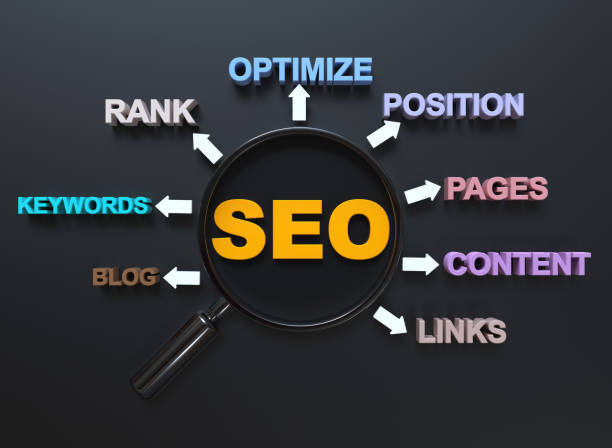
While #On-Page_SEO is a powerful tool for improving rankings, there are common mistakes that can render your efforts ineffective.
One of the biggest mistakes is #Keyword_Stuffing; excessive and unnatural use of keywords that not only harms user experience but is also penalized by search engines.
Your content should be natural and flow smoothly.
Another error is #Thin_Content or #Duplicate_Content.
Pages with little, low-quality, or copied content have little value for users and search engines and rarely rank.
Ensure each page offers unique value.
Ignoring site loading speed and not optimizing for mobile are also significant mistakes that can harm your ranking due to the increasing importance of these factors.
Also, not using or misusing Heading tags, meta tags, and internal linking can impair search engines’ understanding of your content’s structure and topic.
Other common mistakes include broken links (Broken Links) and the absence of an XML Sitemap.
This section of the content, which contains explanatory information and also addresses some common problems with a questioning approach, introduces you to these errors and provides ways to avoid them so that your #On-Page_SEO is done in the best possible way and you remain safe from potential search engine penalties.
The Future of #On-Page_SEO and Upcoming Trends in Optimization
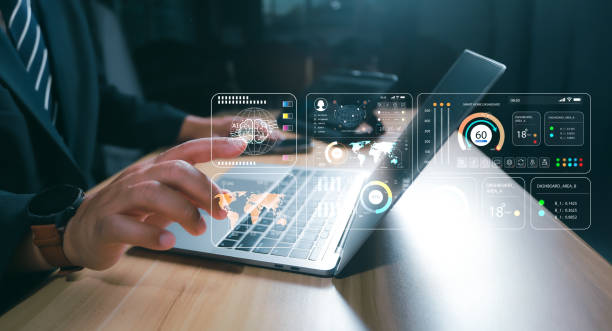
The world of #On-Page_SEO is constantly changing and evolving, and with technological advancements and changes in search engine algorithms, new trends emerge.
One of the most important upcoming trends is the increasing emphasis on #Artificial_Intelligence (AI) and machine learning in understanding content and user intent.
Google’s algorithms like RankBrain, BERT, and MUM are capable of understanding not only keywords, but also the meaning and concept behind search queries.
This means your content should be optimized not just for keywords, but for answering complex questions and providing comprehensive and in-depth information.
#Voice_Search also as a significant trend, has shifted keyword research towards conversational and question-based phrases.
Optimizing for Core Web Vitals, which are page experience metrics measuring loading speed, interactivity, and visual stability, will remain crucial.
Also, the importance of #E.E.A.T (Experience, Expertise, Authoritativeness, Trustworthiness) and the need to produce very high-quality and authoritative content is becoming more prominent.
Overall, the future of #On-Page_SEO will revolve around providing the best possible user experience, with content that precisely answers their needs and is available as quickly as possible.
This news and analytical section helps you prepare fully for future changes in the field of on-page SEO and keep your site at the forefront.
Frequently Asked Questions
| Question | Answer |
|---|---|
| What is On-page SEO? | On-page SEO refers to a set of actions performed within your website to improve its ranking in search engine results. This includes optimizing content, site structure, and HTML code. |
| Why is On-page SEO important? | On-page SEO helps search engines understand your page’s content and determine whether your content is relevant to searchers. It is the foundation of any successful SEO strategy. |
| What are the key elements of On-page SEO? | Page Title (Title Tag), Meta Description, keyword usage, image optimization, heading structure (H1, H2, …), internal linking, and content quality are key elements. |
| How to optimize the Page Title (Title Tag)? | The page title should include the main keyword, be engaging and encouraging to click, and be between 50 to 60 characters (or appropriate pixels) in length to be fully displayed in search results. |
| What role does Meta Description play in On-page SEO? | The meta description is a summary of the page’s content displayed below the title in search results. Although it does not directly affect ranking, it helps SEO by increasing the click-through rate (CTR). |
| What is the importance of using heading structure (H1, H2, H3) in On-page SEO? | Headings structure the page’s content and make it easier to read. H1 is usually the main title of the page and should include the main keyword. H2 and H3 are used to organize subsections and help search engines understand the content hierarchy. |
| How to effectively use keywords in content? | Keywords should be used naturally and logically throughout the content, including the introduction, body, and conclusion. Avoid excessive keyword stuffing. |
| What steps are involved in optimizing images for On-page SEO? | This includes compressing images to reduce size, using descriptive file names, adding appropriate Alt Text, and optimizing the image title and description. Alt Text is crucial for accessibility and helping search engines understand image content. |
| What is Internal Linking and what are its benefits? | Internal linking means creating links from one page on your website to another page on the same website. This helps users easily navigate your site, distributes page authority across the site, and helps search engines better understand your site’s structure. |
| What is the importance of content quality in On-page SEO? | High-quality, accurate, comprehensive, and valuable content for users, is the cornerstone of on-page SEO. Search engines prefer content that meets user needs. Quality content leads to longer user dwell time (Dwell Time) and reduced bounce rate (Bounce Rate) which are positive SEO signals. |
and other services of Rasab Web advertising agency in the field of advertising
Smart Marketing Automation: An effective tool for digital branding with the help of marketing automation.
Smart Digital Advertising: Designed for businesses seeking to manage campaigns through precise audience targeting.
Smart Custom Software: An effective tool for online growth using real data.
Smart SEO: An effective tool for user interaction with the help of specialized programming.
Smart Digital Branding: A fast and efficient solution for increasing sales with a focus on intelligent data analysis.
And over hundreds of other services in the field of internet advertising, advertising consultation, and organizational solutions
Internet Advertising | Advertising Strategy | Advertorials
Resources
Full Tutorial on On-Page SEO
What is On-Page SEO and What is its Use?
What is On-Page SEO?
What is On-Page SEO? Complete Guide to On-Page SEO
? Are you ready to transform your business in the digital world? Rasab Web Afran Digital Marketing Agency, by providing comprehensive services including corporate website design and SEO, offers innovative solutions for your growth and success. For more information and a free consultation, contact us.
📍 Tehran, Mirdamad Street, next to Bank Markazi, Kazerun Jonoubi Alley, Ramin Alley, No. 6


